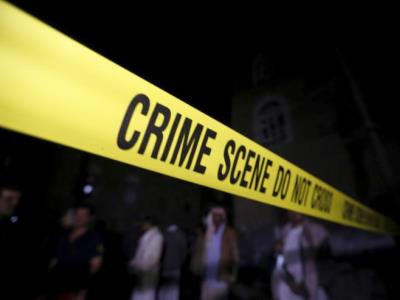
The decision comes on the heels of a number of mass shootings across the country, the most recent being the death of 14 people in San Bernardino, Calif., on Wednesday. In early October, nine people died in a school shooting at Umpqua Community College in Oregon, before the gunman killed himself.
Michael Kozlowski, Connecticut Board of Regents director of public affairs, said that the board had been working toward a decision on arming security personnel at community colleges since 2012. “This resolution wasn’t precipitated by any of the things that we have been seeing recently, like the [tragedy] in San Bernardino,” he said, later adding, “[But that] certainly makes the issue have greater currency.”
Some of the more horrific instances of gun violence that the nation has borne witness to recently have been carried out at K-12, community college, and university campuses. Dr. J. Reid Meloy, clinical professor of psychiatry at the University of California San Diego and author of the International Handbook of Threat Assessment, said that school campuses represent a “soft target” to perpetrators. “They’re easily accessed and there’s typically very little security,” he said.
According to a Department of Justice report, three-quarters of four-year universities have armed security forces. K-12 schools and community colleges, on the other hand, tend to have lighter security. The expectation is that local police departments will be on call to act.
Statistically speaking, mass shootings like the ones at Umpqua and San Bernardino are very infrequent. However, there has been an increase in such episodes since 2007, Meloy said. “If you compare 2000-2006, and then compare 2007-2014, between those two periods of time there has been a 150 percent increase of active shootings incidents in the U.S.,” he said, citing an FBI study.
With even a sliver of a chance of being the scene of a future tragedy, schools across the country have taken measures to prevent or at least mitigate potential mass shootings. Victor Herbert, professor at the John Jay College of Criminal Justice and director of the academy of the critical incidents analysis, noted that the way security forces respond to mass shootings has changed dramatically since the tragedy at Columbine High School in 1999.
“Post-Columbine, the protocols have really changed,” Herbert said. Prior to Columbine, police officers were trained to follow a “contain-and-wait” strategy. Abiding by that protocol at Columbine, emergency responders and the SWAT team waited for 45 minutes to assemble before they entered the school.
The response measures that developed as a result of the delay at Columbine call on emergency responders to take down the gunman as quickly as possible, Herbert said. “Now the protocol on behalf of the security community surrounding the college, as well as the police department, and [all other emergency responders], the protocol pretty much is, you go in, and you go in as quickly as possible, to try to minimize damage,” he explained. As many experts have pointed out, every second counts when it comes to saving lives in the event of a mass shooting.
The uptick in mass shootings suggests that it may be necessary to develop more preventative measures to gun violence. “The really important issues I believe are not being addressed,” Herbert said, later adding, “The idea that if there’s more guns there will be less killing ― there’s something missing in that logic. … The real issue is who is getting guns, and why is it so easy, and why do [perpetrators] have guns that serve no purpose except to kill people in war situations?”
The gun rights debate is a hotly contested topic in the U.S., with no real resolution in sight.
Some experts say that it is possible to prevent some shootings before they even occur, by identifying potential perpetrators. Brian van Brunt, senior vice president at the National Center for Higher Education Risk Management (NCHERM) and executive director of the National Behavioral Intervention Team Association (NaBITA), said that emergency responses in the event of a fire and a mass shooting are similar in some ways. “It’s sort of like talking about how effective a fire department is at stopping fires—they do a nice job at that because they put out the fire … but we really want to get to that issue beforehand, before the fire has started,” he said.
In his work at NCHERM and NaBITA, van Brunt provides training to behavioral intervention teams at colleges and universities across the country. “[We can put] interventions in place, sometimes counseling, with student conduct, sometimes with law enforcement, to sometimes stop things before they escalate into an attack,” he said.
Staff writer Catherine Morris can be reached at [email protected].



















